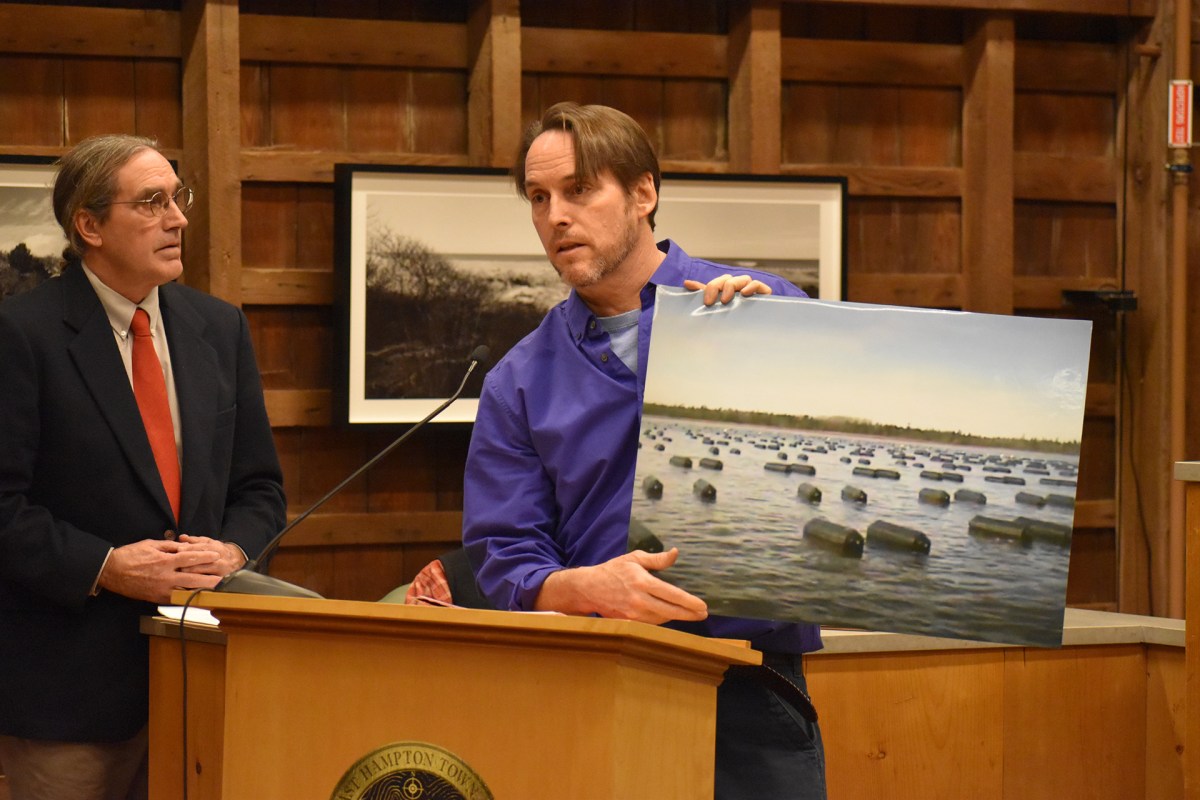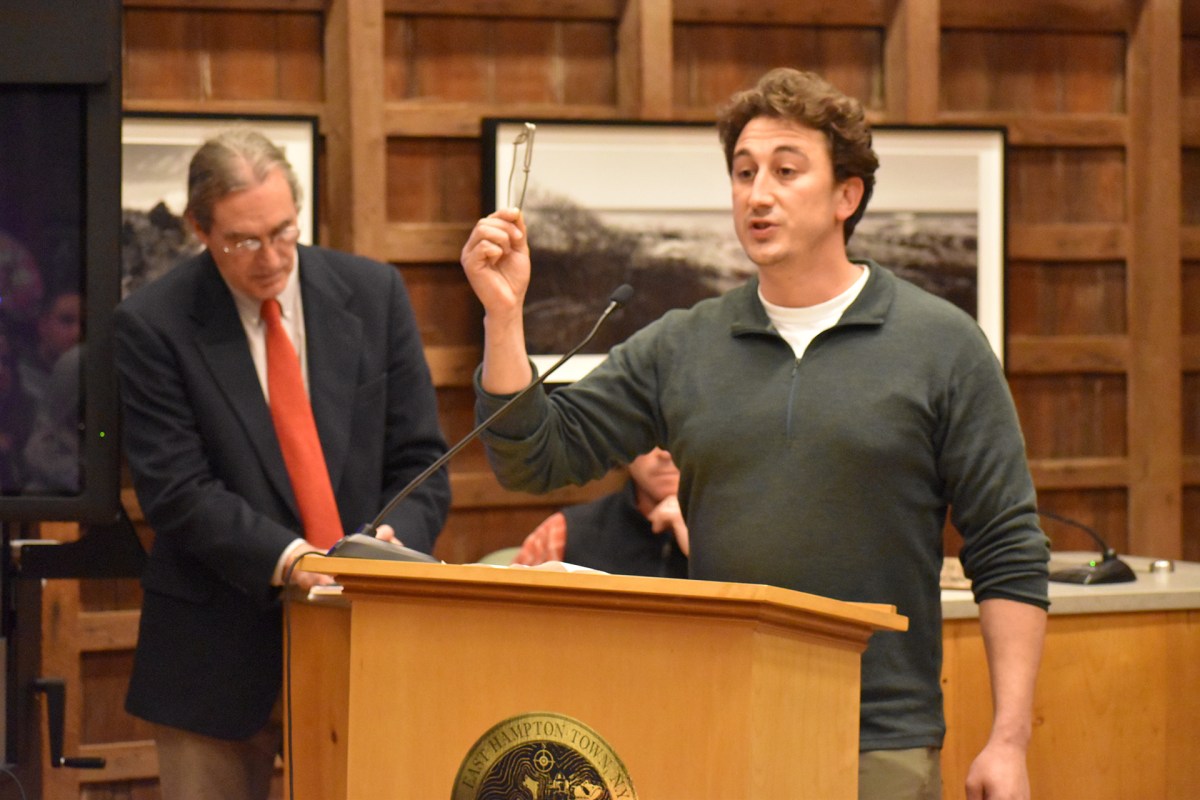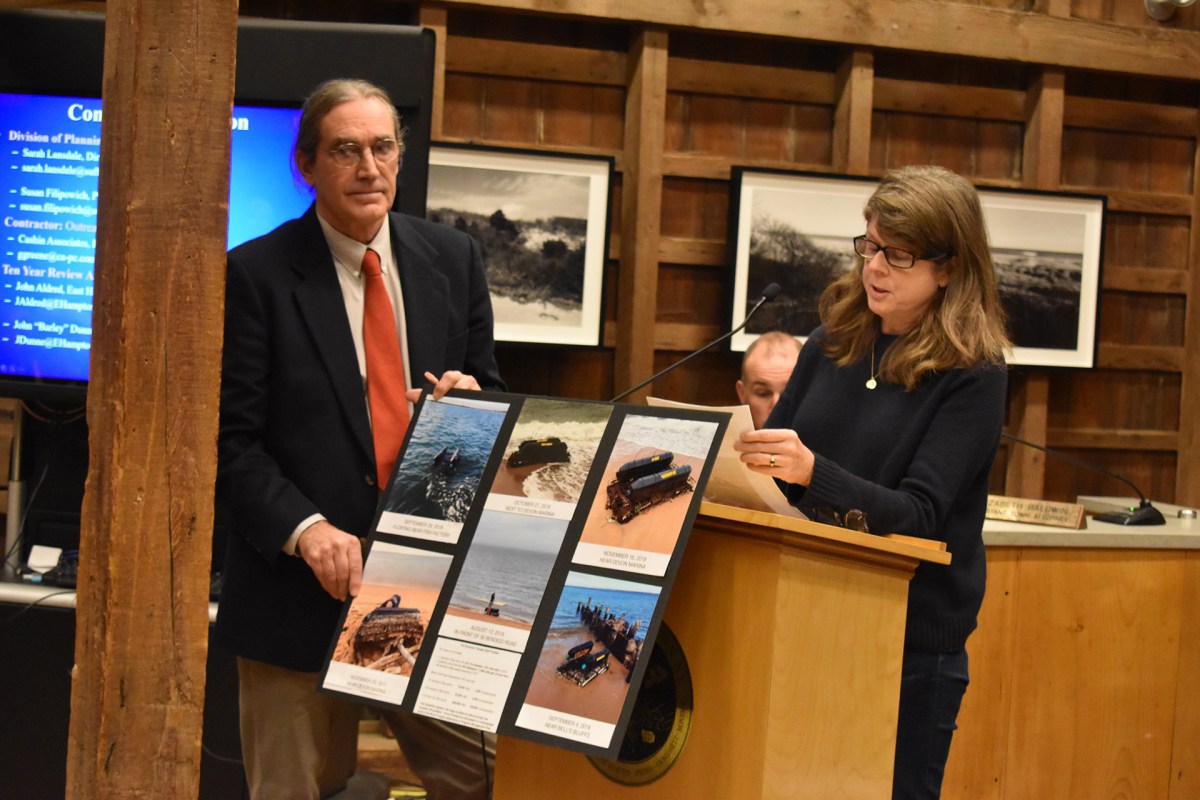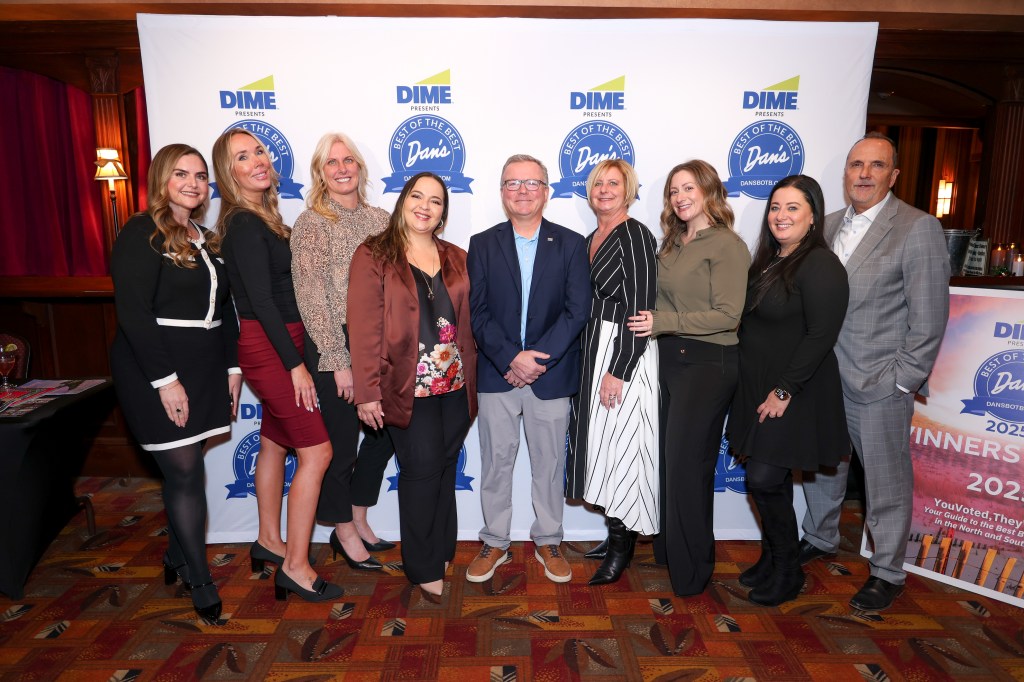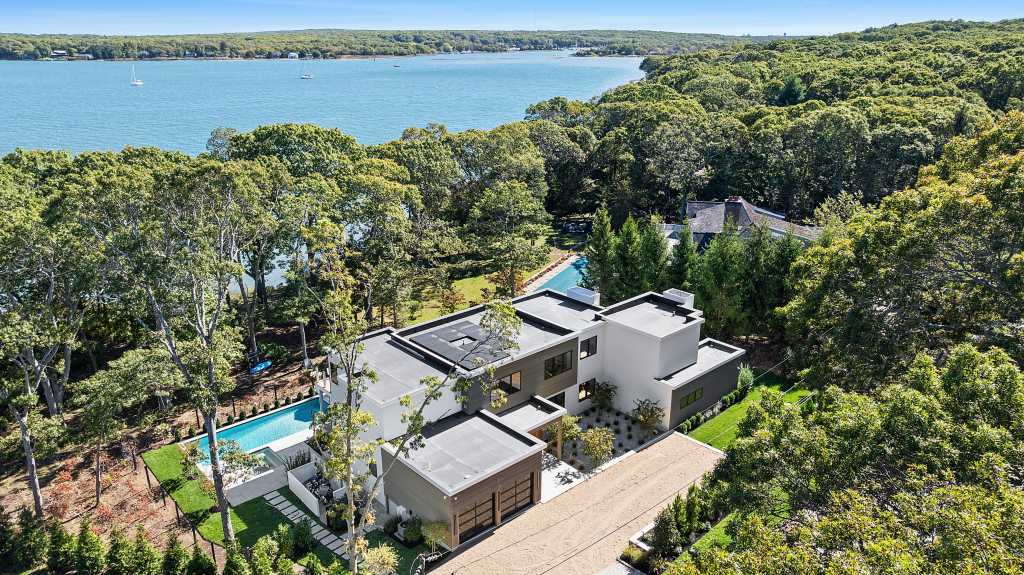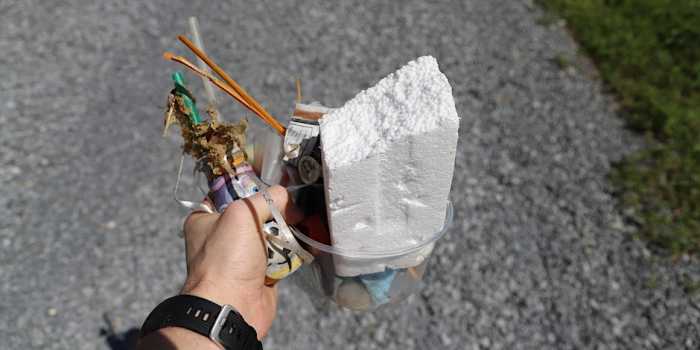Opposition To Shellfish Leases Surfaces
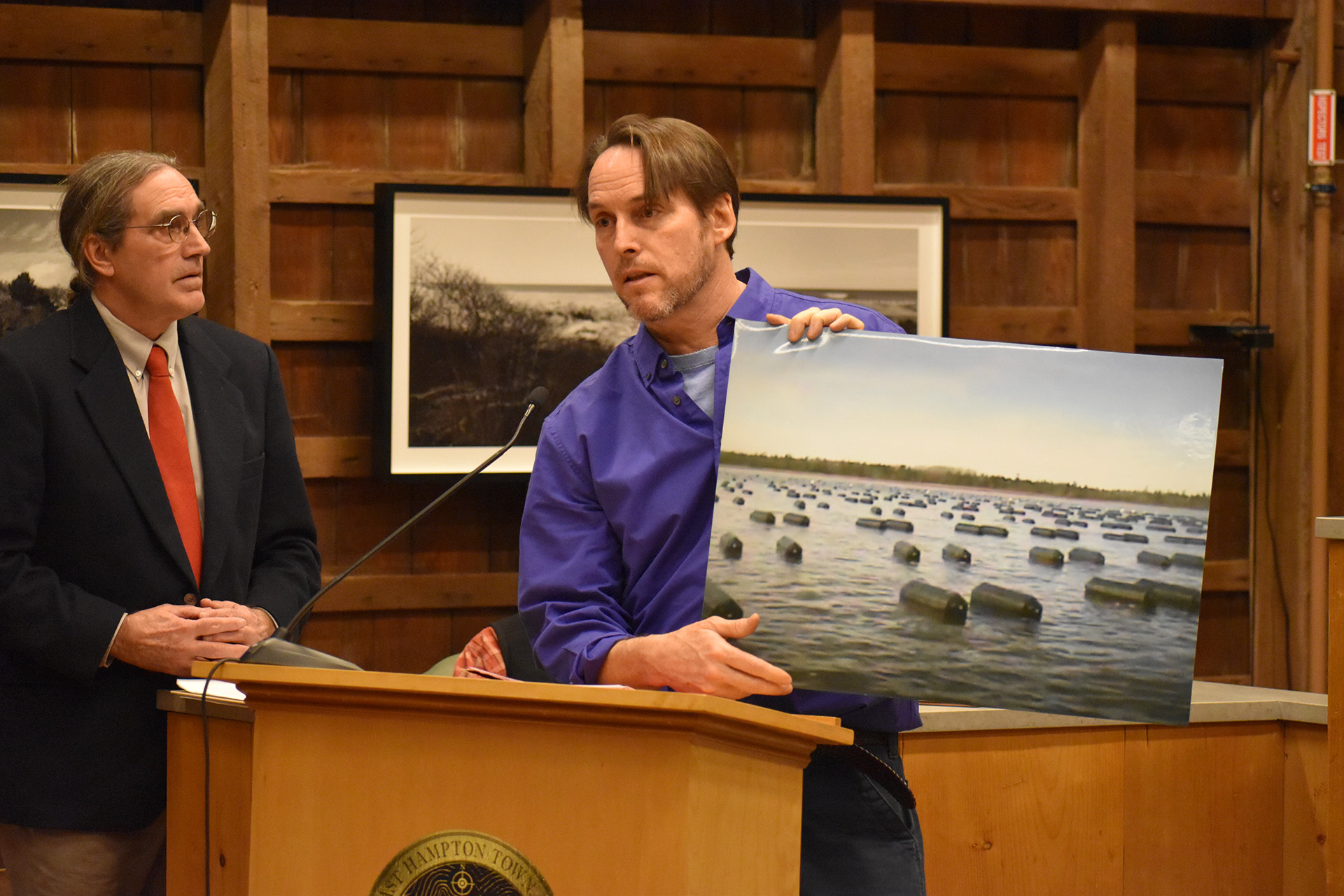
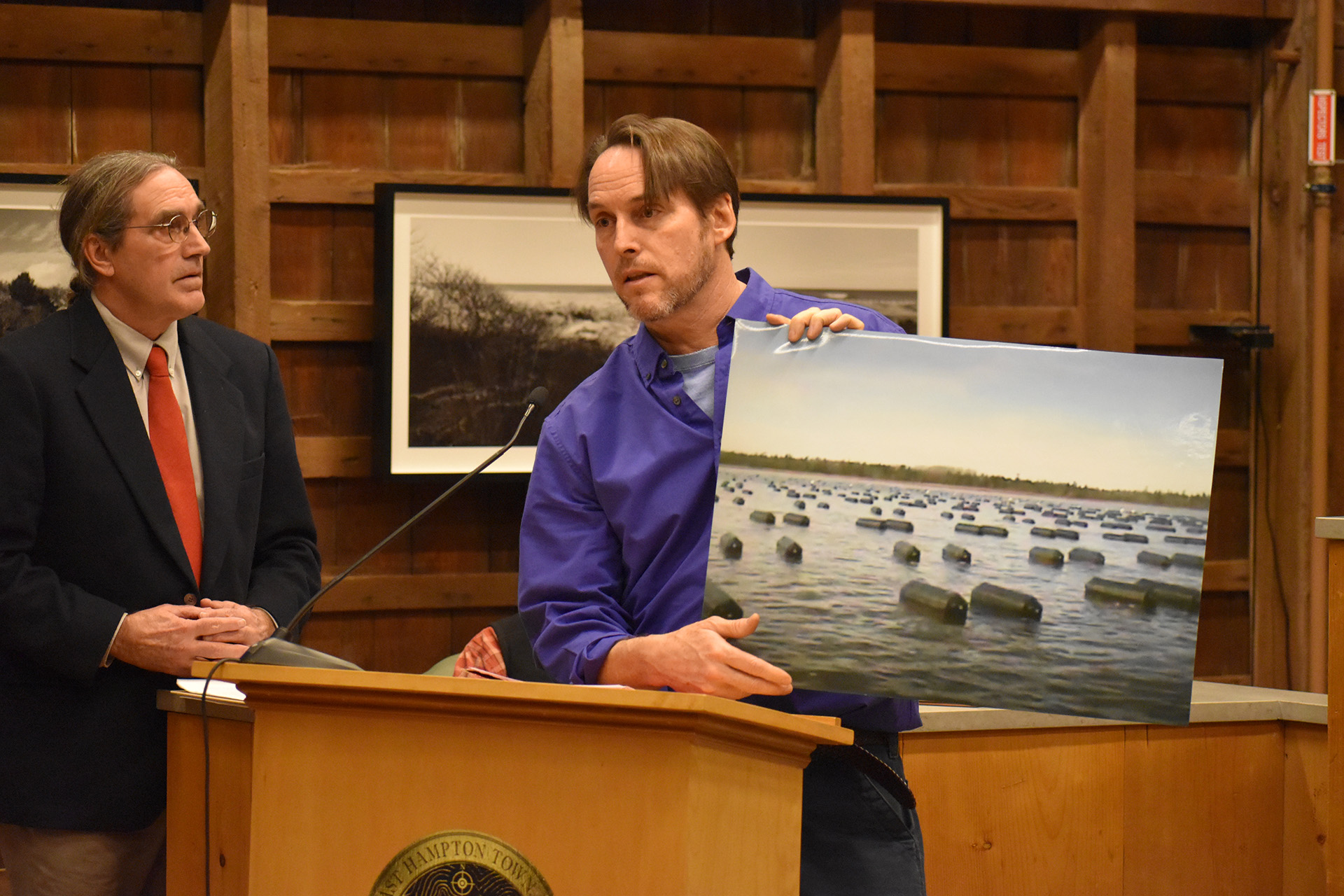
The interests of recreational users and commercial oyster farmers in Napeague Bay clashed January 9 at East Hampton Town Hall at an informational meeting on the future of Suffolk County’s aquaculture leasing program.
Recreational users said they feared the small number of leases currently in the bay would only continue to grow, and the number of floating cages holding oysters would multiply, causing navigational hazards for boaters, barriers for wind and kite surfers, and visual blight.
“We all support a clean and healthy bay, and we all support providing opportunities for local fishermen and women to harvest the bay,” said Christina Isaly-Liceaga, representing 78 members of the Concerned Citizens of Gardiner’s Bay. “But we do not support allowing surface equipment and gear being placed in locations that are frequented by boaters, sailors, and other recreational users or to destroy the scenic view of residents and visitors to our nearby parks.”
A handful of commercial operators said opposition to the leasing program was overblown, based on misunderstanding of their business and the desire of some people to have the bay to themselves.
“Our industry is already highly regulated,” said Adam Younes, the owner of Promised Land Mariculture, who holds one of two currently active leases in Napeague Bay. “I’m obviously aware of the displeasure of a few residents to my floating gear. However, this is a new technology, and it is used in many other places in the United States and around the world.”
The county’s lease program had its origins in a state law, passed in 2004, that allowed the county to grant leases on up to 110,000 acres in Peconic and Gardiner’s bays. Before the program was officially launched in 2008, the county whittled down the area deemed suitable for aquaculture to about 29,000 acres. In the 10 years the program has been in effect, the county has been selective, leasing only 600 acres in total and issuing only six new 10-acre leases each year.
The county is currently conducting a 10-year review of the program. As part of that process, which is not expected to be completed for at least a year, county officials agreed to hold last week’s informational meeting in East Hampton. The county was represented by Sara Lansdale, its director of planning; DeWitt Davies, the county’s chief environmental analyst; Susan Filipowich, a senior environmental analyst who oversees the lease program, and representatives of Cashin Associates, which has provided engineering and environmental planning advice for the program.
‘No Issues with Oysters’
Trustee John Aldred, former director of East Hampton Town’s shellfish hatchery, led the meeting. Its purpose, he said, was to try to disseminate as much information about the program and encourage as much public feedback as possible. “The trustees have no dog in this fight,” he said, noting that the county leases are all at least 1000 feet from shore, beyond the Trustees’ jurisdiction.
Although Filipowich tried to allay fears about the extent of the program, many in the audience were focused on the fact that a total of 859 potential leases have been identified, including 22 in Gardiner’s and Napeague bays, where boat traffic is heavy and recreational users abound.
“This would seem like the last place you’d want to install floating gear,” said Curt Schade, the commodore of the Devon Yacht Club, which that very day had settled a lawsuit with Frank McMahon, the owner of the Amagansett Oyster Company, over the siting of his lease, which has yet to be developed.
“We have no issues with oysters being cultivated in cages that sit on the bottom, but the floating gear makes the surface of our bays unusable for others,” Schade said. “It is the taking of a public resource for the benefit of a private individual.”
Schade and several other speakers said the aquaculture program conflicts with portions of the town’s Local Waterfront Revitalization Plan, a comprehensive planning document covering the town’s water resources. Although the LWRP encourages water-based commercial activity, it calls for that activity to be balanced with recreational and other uses.
Katie Sisson, whose family owns a house on Cranberry Hole Road in Amagansett, presented photographs of an oyster cage that had broken free and washed ashore near her home. “They have introduced a hazard both in the water and on the beach,” she said. “Can you imagine how many cages would be running around Gardiner’s Bay if this lease program were run out in full?” she said.
But Younes and other commercial growers said floating cages were an essential part of a modern oyster growing operation, especially in an area with a muddy bottom like Napeague Bay, where currents can flip bottom-anchored cages and suffocate the oysters. He said his cages are clearly marked and should pose no problems for attentive sailors. As to the cage that broke off and landed near Sisson’s home, Younes said he would change the hardware on his cages to
prevent that from happening again.
Bob Valenti of Multi Aquacultural Systems of Amagansett said cages are raised to the surface in the summer because that’s where the food is. “One of the reasons you float the cages is not to become an obstruction,” he said. “You float the cages to give [oysters] access to phytoplankton” which is concentrated near the surface in the spring and summer.
Chuck Westfall, another oyster grower, referring to the percentage of the bays that are dedicated to aquaculture said, “A fraction of one percent is what is being used now. And that’s after 10 years”. He suggested the need for compromise.
“Unless you have a boat in the area,” came a response from the audience.
sjkotz@indyeastend.com
